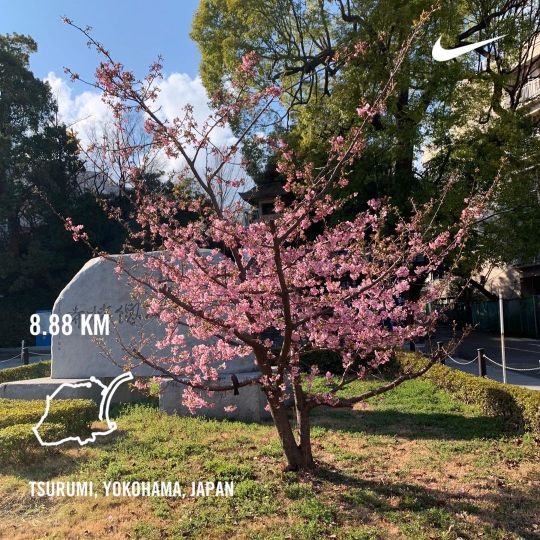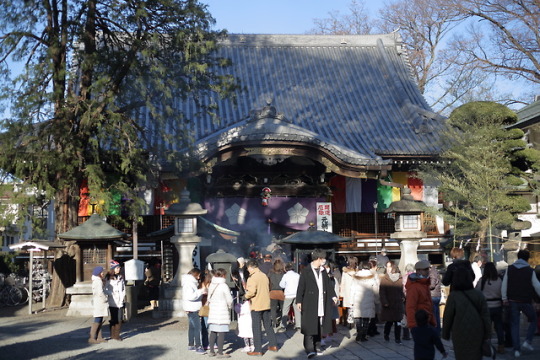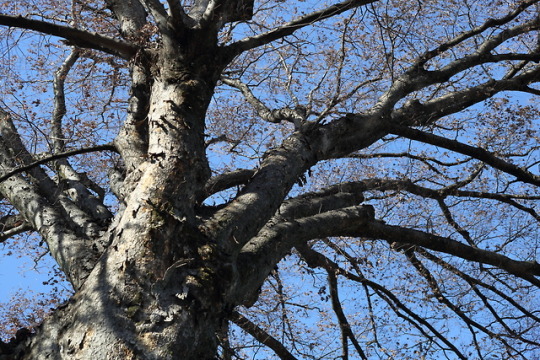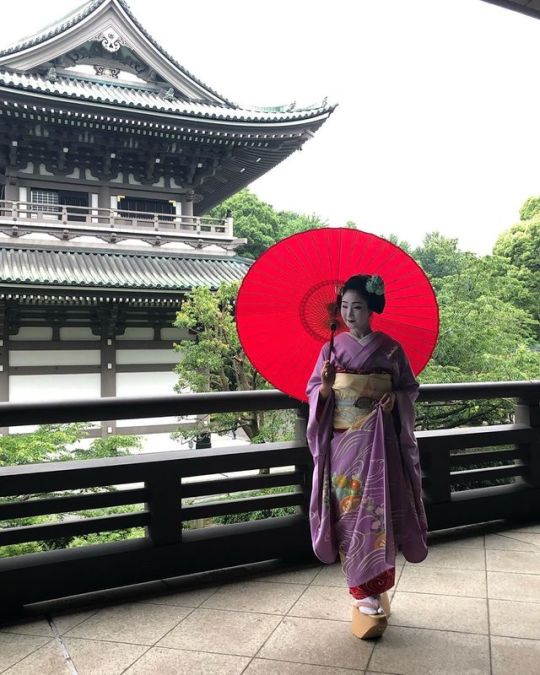#sojiji
Photo

A sculpted image of Jizō Bodhisattva (地蔵菩薩) on the grounds of Sōjiji Temple (総持寺) in Ibaraki, Osaka Prefecture
Photo by まあたろう [Maatarou] documenting their pilgrimage to this temple in January 2017
#buddhist temple#大阪府#osaka prefecture#茨木市#ibaraki#総持寺#sojiji#buddhist art#地蔵菩薩#地蔵#jizo#西国三十三所#真言宗#shingon
37 notes
·
View notes
Photo

Thursday afternoon run 8.88 = Happy Happy Happy 🌸 🌸 🌸 #nikerunclub #run #running #nikeplus #tsurumi #yokohama #japan #afternoon #afternoonrun #🏃♂️ #sojiji #総持寺 #sakura #cherryblossom #桜 #🌸 (at 大本山總持寺) https://www.instagram.com/p/Co_oK01P7jh/?igshid=NGJjMDIxMWI=
#nikerunclub#run#running#nikeplus#tsurumi#yokohama#japan#afternoon#afternoonrun#🏃♂️#sojiji#総持寺#sakura#cherryblossom#桜#🌸
2 notes
·
View notes
Photo

高野山
和歌山の名所
高野山(こうやさん)は、和歌山県にある、真言宗の総本山であり、仏教の聖地として知られています。標高約900メートルに位置し、霊峰としても親しまれています。
高野山は、空海(弘法大師)によって開かれた寺院群で構成されており、密教の修行や研究の拠点として栄えました。現在も多くの寺院が点在し、厳かな雰囲気の中で修行僧や参拝客が訪れます。
高野山の中心には金剛峯寺(こんごうぶじ)があり、この金剛峯寺を中心に、大師堂や総持寺、宝戒院など、多くの重要文化財や名刹が存在します。
また、高野山は霊峰としても知られ、山岳信仰の対象となっています。美しい自然が広がり、四季折々の風景が楽しめます。特に紅葉の季節には、山々が美しい紅葉色に染まり、多くの観光客が訪れます。
高野山には一般観光客向けの宿坊もあり、参拝や体験プログラム、精進料理を提供しています。また、霊山巡礼を求める人々や仏教信者の修行の場としても知られており、その厳かな雰囲気や豊かな自然に触れることができます。
♪♫♬🎤🎹🎶♪♫♬🎤🎹🎶♪♫♬🎤🎹🎶♪♫♬🎤🎹🎶
Koyasan
Famous places in Wakayama
Koyasan, located in Wakayama Prefecture, is the head temple of the Shingon sect and is known as a sacred place for Buddhism. Located at an altitude of approximately 900 meters, it is also known as a sacred mountain.
Mount Koya consists of a group of temples founded by Kukai (Kobo Daishi), and flourished as a base for training and research in esoteric Buddhism. Today, there are many temples dotted around the area, which are visited by monks and worshipers in a solemn atmosphere.
Kongobuji Temple is located in the center of Mt. Koya, and around Kongobuji Temple there are many important cultural properties and famous temples such as Daishi-do Hall, Sojiji Temple, and Hokaiin Temple.
Mt. Koya is also known as a sacred mountain and is the subject of mountain worship. Beautiful nature spreads out and you can enjoy the scenery of each season. Especially during the autumn foliage season, the mountains are dyed in beautiful autumn colors and many tourists visit.
Koyasan also has a lodging house for general tourists, offering worship services, experience programs, and vegetarian cuisine. It is also known as a place of ascetic training for people seeking sacred mountain pilgrimages and Buddhist believers, and you can experience its solemn atmosphere and rich natural beauty.
0 notes
Photo

Besides Setsubun this week, there are lot of fun events you should definitely check out 🙈 🤩 Here are some exciting Japanese events and festivals happening this week! Since so many things are happening this week, we have split the events into Non-Setsubun-related and Setsubun-related! Check out our other post for Setsbun events happening this week! 🤗 Full disclaimer, a few of these events are not in Tokyo, but in a neighbouring prefecture. For these events, you can visit on a day trip or even an overnight getaway! 📣 📣 📣 If you want all the events, information, official website, links etc, just COMMENT "Events" @flipjapanguide and we will send it straight into your inbox 👉 Yokohama Chinatown Spring Festival 横浜中華街 春節 中華街 Chinatown January 22nd - February 5th Kanagawa 👉 Nishiarai Daishi Sojiji Temple Daruma Service 西新井大師 總持寺 だるま供養 Nishiarai Daishi Sojiji Temple 西新井大師 總持寺 Adachi, Tokyo February 3rd 👉 Odawara Plum Festival 小田原梅まつり Soga Plum Grove 小田原城址公 Kanagawa February 4th-26th 👉 Sawara Hina Meguri さわら雛めぐり Katori City 千葉県香取市 Chiba February 5th- March 26th 👉 Keio Mogusaen Plum Festival 京王百草園 梅まつり Keio Mogusaen 京王百草園 Hino, Tokyo February 4th-March 12th 👉 Okunikko Yumoto Onsen Snow Festival 奥日光湯元温泉雪まつり Lake Yunoko 湯ノ湖湖畔 Tochigi February 1st-28th Follow @flipjapanguide to stay up to date on events, festivals, matsuri and all things Japan! #tokyonow #matsuri #japanfestival #japanesefestivals #tokyolife #tokyoevent #tokyoevents #tokyolifestyle #japanlife #japanlifestyle #traveljapan #visitjapan #visitjapanjp #discovertokyo #exploretokyo #exploringtokyo #livingintokyo #tokyolife #tokyoculture #tokyoevent #tokyoevents #tokyoexpat #tokyolover #tokyotokyo #tokyotravel #tokyotrip #tokyotrips #japantravelguide #japanguide #japantravel #japantraveller #japantraveler (at Tokyo, Japan) https://www.instagram.com/p/CoD7PGzyhnQ/?igshid=NGJjMDIxMWI=
#tokyonow#matsuri#japanfestival#japanesefestivals#tokyolife#tokyoevent#tokyoevents#tokyolifestyle#japanlife#japanlifestyle#traveljapan#visitjapan#visitjapanjp#discovertokyo#exploretokyo#exploringtokyo#livingintokyo#tokyoculture#tokyoexpat#tokyolover#tokyotokyo#tokyotravel#tokyotrip#tokyotrips#japantravelguide#japanguide#japantravel#japantraveller#japantraveler
0 notes
Photo

[ 朱色の遊泳 ] . . . 深緑色の池に、 鮮やかな朱色の宝石が 優雅に泳ぐ。 . . . ==================== 📷 2022.07 Nishiarai Daishi Sojiji, Adachi-ku, Tokyo . Canon EOS Kiss M2 💠🍃💠🍃💠🍃💠🍃💠 ==================== . . . #japan #tokyo #nishiaraidaishi #nishiaraidaishi_sojiji #nishiaraidaishi_nishikigoi #nishiaraidaishi_sojiji_nishikigoi #nishiaraidaishi_ryokuyo #nishiaraidaishi_sojiji_ryokuyo #nishiaraidaishi_aomomiji #nishiaraidaishi_sojiji_aomomiji #nishiaraidaishi_momiji #nishiaraidaishi_sojiji_momiji #東京 #西新井大師 #西新井大師_總持寺 #西新井大師_錦鯉 #西新井大師_總持寺_錦鯉 #西新井大師_緑葉 #西新井大師_總持寺_緑葉 #西新井大師_青もみじ #西新井大師_總持寺_青もみじ #西新井大師_もみじ #西新井大師_總持寺_もみじ #泳ぐ宝石_錦鯉 #swimming_jewel_nishikigoi #清浄なる美しき境内 #clean_and_beautiful_precincts #緑葉の薫るお寺 #temple_with_green_leaves #canoneoskissm2 (西新井大師 總持寺) https://www.instagram.com/p/ChAUzOdPdGD/?igshid=NGJjMDIxMWI=
#japan#tokyo#nishiaraidaishi#nishiaraidaishi_sojiji#nishiaraidaishi_nishikigoi#nishiaraidaishi_sojiji_nishikigoi#nishiaraidaishi_ryokuyo#nishiaraidaishi_sojiji_ryokuyo#nishiaraidaishi_aomomiji#nishiaraidaishi_sojiji_aomomiji#nishiaraidaishi_momiji#nishiaraidaishi_sojiji_momiji#東京#西新井大師#西新井大師_總持寺#西新井大師_錦鯉#西新井大師_總持寺_錦鯉#西新井大師_緑葉#西新井大師_總持寺_緑葉#西新井大師_青もみじ#西新井大師_總持寺_青もみじ#西新井大師_もみじ#西新井大師_總持寺_もみじ#泳ぐ宝石_錦鯉#swimming_jewel_nishikigoi#清浄なる美しき境内#clean_and_beautiful_precincts#緑葉の薫るお寺#temple_with_green_leaves#canoneoskissm2
0 notes
Text



42 notes
·
View notes
Photo



12 notes
·
View notes
Photo

ちょっとそこまで。#32 「 總持寺 」
#總持寺#曹洞宗#大本山#釈迦如来#sojiji#sojijitemple#三松関#三門#大祖堂#大雄宝殿#寺社巡り#お寺#寺院#temple#visittemple#散歩#鶴見#ぶらり#ちょっとそこまで
0 notes
Photo

A beautiful maiko from Kyoto I saw at the Sojiji Temple. 🇯🇵 🇯🇵 🇯🇵 #sojiji #sojijitemple #yokohama #japan #maiko #geisha #temple #shrine #kyoto #beautiful (at Sojiji Temple) https://www.instagram.com/p/BylCfahJrtT/?igshid=byh7y0uzt8yy
0 notes
Photo

今日は少し暖かく感じた一日でした☀️ これぐらいの気候が一番好きだな😁 ちなみに風邪の方は まだ治ってません🤧 でも昨日よりは咳もでないから 週末までには治るでしょう🤗 過去picですが 昨年の大阪 総持寺での竹燈籠🎋 #osaka #sojiji #Taketourou #総持寺 #竹燈籠 https://www.instagram.com/p/BtQ1wtllqjd/?utm_source=ig_tumblr_share&igshid=1szm57wrk2t5t
0 notes
Photo

Ikkō Narahara, Japanesque #53, Sojiji, Japan, 1969. Gelatin silver print. Center for Creative Photography, University of Arizona: Gift of the artist. © Ikko Narahara
82 notes
·
View notes
Photo

A detail from “The Illustrated Miraculous Origins of Sōjiji Temple” (総持寺縁起絵巻) dating to 1727, here depicting a procession to the temple in present-day Ibaraki, Osaka Prefecture
Image from Ibaraki City’s official twitter account upon the illustrated scroll’s registration as a municipal tangible cultural property
#japanese art#buddhist art#buddhist literature#絵巻#emaki#大阪府#osaka prefecture#茨木市#ibaraki#総持寺#sojiji#総持寺縁起絵巻#sojiji engi emaki#西国三十三所
14 notes
·
View notes
Photo

Monday morning run #nikerunclub #run #running #nikeplus #tsurumi #yokohama #japan #morning #morningrun #🏃♂️ #sojiji #総持寺 #sakura #cherryblossom #桜 #🌸 #shotoniphone (at 大本山總持寺) https://www.instagram.com/p/CqRL4yLvT_p/?igshid=NGJjMDIxMWI=
#nikerunclub#run#running#nikeplus#tsurumi#yokohama#japan#morning#morningrun#🏃♂️#sojiji#総持寺#sakura#cherryblossom#桜#🌸#shotoniphone
1 note
·
View note
Photo

Soji Temple in Settsu Province, No. 22 on the Saikoku Pilgrimage Route (Saikoku junrei nijuniban Settsu no kuni Sojiji), from the series "The Miracles of Kannon (Kannon reigenki)", Utagawa Kunisada I, 1859, Art Institute of Chicago: Asian Art
Gift of Martin A. Ryerson
Medium: Color woodblock print; oban
https://www.artic.edu/artworks/92251/
13 notes
·
View notes
Photo

Ikkō Narahara, Japanesque #53, Sojiji, Japan, 1969. Gelatin silver print. Center for Creative Photography, University of Arizona: Gift of the artist. © Ikko Narahara
Source :
artdaily.com
2 notes
·
View notes
Text
Piccole storie Zen – Le due lune – Two moons – Littles zen story

LE DUE LUNE
Un giorno, mentre stavo riposando in una stanza del dipartimento editoriale, situato a lato di una strada, udii alcune persone parlare mentre stavano lentamente risalendo la salita. Senza prestare particolare attenzione, sentii qualcuno dire:
“Questo è uno dei due templi principali della scuola Soto. L’altro si chiama Eiheiji e si trova nella provincia di Fukui”.
Curioso di sapere chi fosse, mi sporsi per guardare fuori. Era il signor M., che ha un negozio vicino al portale del tempio e stava facendo da guida a un gruppo di visitatori che sembrava arrivare da lontano.
Alla domanda di uno dei visitatori sul perché questa scuola ha due templi principali,
il signor M. rispose: “Ascolta, è come una famiglia costituita da un padre e una madre. Il tempio Eiheiji è il padre e questo è la madre…”.
Al che il visitatore disse: “Chi ha più autorità?”.
E il signor M., con soddisfazione: “La madre”.
“Dunque si tratta di un piccolo uomo con una grande moglie, è così? E che cos’è questo grande edificio?” chiese poi il visitatore indicando la palestra del liceo di Tsurumi.
Il signor M.: “Qualsiasi cosa sia, si tratta di una madre molto forte, che dirige un liceo femminile. Prendendo spunto dal motto del fondatore ‘mettete al mondo figli e crescete’, è stata creata una grande setta religiosa”.
“Come si chiama il fondatore?” chiese il visitatore.
“Keizan Zenji.”
“Ho sentito parlare di Dogen, ma di Keizan, mai” replicò il visitatore.
“Lo immaginavo. Le mamme non diventano famose. E questo è ciò che le rende grandi” rispose il signor M.
Questa è solo una parte della conversazione che ho sentito. Però mi ha colpito molto e fatto riflettere perché è veritiera. Gasan Zenji è colui che lavorò in stretta collaborazione con Keizan Zenji per fondare Sojiji e stabilire le basi su cui oggi prospera la scuola Soto.
Gasan lasciò la propria famiglia per diventare novizio sul monte Hiei all’età di sedici anni. Per otto anni studiò il buddismo e, in particolare, approfondì la dottrina della setta Tendai. Tuttavia, realizzando che la vera pace della mente non si può ottenere tramite il buddismo scolastico, Gasan si allontanò dal monte Hiei, divenne un discepolo di Keizan Zenji e si dedicò alla pratica dello zen. Gasan era perspicace, sensibile di carattere e robusto di costituzione. Sembrava molto affidabile e Keizan Zenji si rallegrò di avere un tale successore. Nello stesso tempo, tuttavia, Gasan pareva piuttosto orgoglioso della propria intelligenza e Keizan Zenji decise in segreto che, al momento opportuno, avrebbe fatto qualcosa riguardo a quel comportamento altezzoso che lo portava a trattare la gente con una certa supponenza.
In una notte d’inverno con la luna allo zenith, le montagne, i fiumi, i campi e i villaggi erano tutti illuminati dal puro chiarore creando uno scenario di indescrivibile bellezza; in qualche modo la luce sembrava brillare persino attraverso il corpo e la mente degli uomini. Come se la domanda gli fosse appena venuta in mente, Keizan Zenji disse: “Gasan, lo sai che ci sono due lune?”.
“No, non lo sapevo” disse Gasan cadendo nel tranello. Vedendo Gasan in difficoltà nel trovare una risposta, Keizan Zenji disse con voce bassa e solenne: “Se non sai che ci sono due lune, non posso permettere che tu diventi la maggiore autorità per la diffusione degli insegnamenti zen della scuola Soto”. Gasan non aveva mai sentito Keizan Zenji parlare in tono tanto severo e ne fu sconvolto.
In quel momento, a Gasan venne in mente un fatto storico avvenuto in Cina durante la dinastia Tang, di cui sono protagonisti Kyogen e il suo insegnante, il maestro zen Isan Reiyu
“Sei talmente istruito che non c’è niente che tu non sappia, ma ciò che hai imparato dai libri a me non serve. Vorrei però che tu mi descrivessi con parole tue il periodo trascorso prima che lasciassi il grembo di tua madre, quando non sapevi assolutamente niente.”
Kyogen diede più risposte, ma ogni volta il maestro Isan non le accettava replicando “quello l’hai visto con i tuoi occhi” o “quello l’hai sentito con le tue orecchie” o “quello l’hai letto su un libro”.
In difficoltà, Kyogen chiese: “La prego, me lo spieghi lei”.
Il maestro Isan rispose: “Se te lo spiegassi, lo farei con parole mie, e non ti sarebbe di nessuna utilità”.
Di fronte a questo rifiuto, Kyogen consultò i quaderni e i libri su cui aveva studiato fino ad allora, ma non riuscì a trovare niente. Confuso, Kyogen pensò: “Non posso saziare la fame solo guardando la rappresentazione di un dolce di riso” e bruciò tutti i libri e i quaderni. “Non studierò più gli insegnamenti buddisti. D’ora in poi farò la vita di un semplice monaco e non sottoporrò più la mia mente a severi discipline.”
Kyogen lasciò il maestrò Isan piangendo e raggiunse il monte Buto per saperne di più sulle rovine di Nanyo Echu (- 775 d.C.), dove il suo maestro aveva avuto il proprio eremo, e lì si costruì un ritiro. Piantò dei bambù e, immerso nello zazen, considerò gli alberi come suoi amici. Un giorno, mentre stava pulendo un sentiero, la scopa urtò un pezzo di mattonella che andò a colpire un bambù producendo un suono secco. Nel sentirlo, Kyogen ebbe un’esperienza di improvviso risveglio. Subito si lavò, si purificò e bruciò dell’incenso per rendere omaggio al grande Isan ora tanto lontano da lui. “Oh grande maestro Isan, se quella volta tu mi avessi dato una spiegazione, non avrei mai provato la gioia che provo oggi. Maestro, la tua gentilezza supera quella dei miei genitori.”
Simile a questo fatto realmente accaduto è l’esperienza più recente fatta dal maestro Tetsu Gikai, che a causa della sua intelligenza e perspicacia non poté ricevere la trasmissione del Dharma dal maestro Dogen.
Da quel momento in poi, il comportamento di Gasan cambiò radicalmente. Divenne umile, fece sollecitamente pratica con gli altri monaci e praticò lo zazen con severità. Il suo atteggiamento presuntuoso svanì completamente. Tuttavia, l’ombra del dubbio circa le due lune restò tale per i sei mesi successivi e oltre.
Trascorsi tre anni, la notte del 23 dicembre del 1301 la luna brillava fredda e minacciosa. Il maestro Keizan vide illuminata dalla luna la figura di Gasan assorta nello zazen e lesse la sua mente. Avvicinò quindi la mano all’orecchio di Gasan e fece un rumore con le dita. Nonostante il suono fosse appena udibile, per Gasan fu come un violento fragore che spazzò via tutti i dubbi che lo avevano attanagliato per tre anni.
“Oh, ecco cos’era. Ora capisco” Gasan recepì in modo chiaro il pensiero del maestro Keizan riguardo alle due lune.
Due lune diverse. Una, ovviamente, è quella che risplende in cielo; l’altra è la luce che brilla su tutti gli esseri viventi in tutto l’universo. In altre parole, indipendentemente da quanto una persona conosca la dottrina buddista, se questa non si manifesta o non viene praticata nella vita quotidiana, non si può considerare vera illuminazione. In questo senso le parole di Keizan “non posso permettere che tu diventi la maggiore autorità per la diffusione degli insegnamenti zen”, pur con la loro severità, hanno raggiunto gli strati più profondi della mente di Gazan. Ciò gli ha permesso di capire la relazione secondo la quale “uno è due” e “due sono uno” e di renderla parte di sé.
Quando Gasan afferrò l’essenza degli insegnamenti del maestro Kazan, la felicità e l’ispirazione provate erano tanto intense da essere inesprimibili.
Da allora, tutto il paese fu rischiarato dalla luce delle due lune, il maestro Keizan e il suo discepolo Gasan che, divenuti una cosa sola, cominciarono a diffondere insieme gli insegnamenti. In quel periodo il maestro Keizan spiegava gli scritti biografici dei grandi maestri zen del passato a partire dal Buddha Shakyamuni fino a Ejo, il secondo abate del tempio Eiheiji, proprio nello stesso modo in cui era stata trasmessa la luce della luna. Questo è il famoso Denkoroku che, con lo Shobogenzo del maestro Dogen, include i due tesori delle Grandi Scritture della scuola zen Soto.
TWO MOONS
One day while I was resting in a room of the publishing department which is located at the side of a road, I heard the voices of some people who were slowly coming up the hill. Not particularly paying attention, I overheard the following:
“This is one of the two main temples of the Soto School. The other main temple is called Eiheiji, which is in Fukui Prefecture.”
Wondering who was speaking, I leaned over the fence and looked. It was Mr. M. who manages a store near the temple gate, and he was conducting a group of visitors who appeared to have come from far away.
One of the visitors asked, “Well, why is it that one school has two main temples?”
To this Mr. M. responded, “Look. It’s the same as a household having a father and a mother. Eiheiji is the father, and this is the mother …”
Visitor: “Well which one is more powerful?”
“The mother is,” Mr. M. answered with satisfaction.
“It’s a little man with a big wife then, isn’t it? What’s this building over here?” asked the visitor while pointing to the physical education building of Tsurumi College.
Mr. M.: “Well, whatever it is, this is a very strong mother, and she runs a college for girls only. The founder’s motto was “have babies and grow”, and by this he made up a big religious sect.”
Visitor: “Who was the founder?”
Mr. M.: “Keizan Zenji.”
Visitor: “I’ve heard about Dogen-san, but I’ve never heard about Keizan-san.”
Mr. M.: “That’s right. Mothers are never famous. That’s what’s great about …”
The above is only a part of the conversation I heard. I was very impressed and thought how true it was. The one who worked hand-in-glove with Keizan Zenji in founding Sojiji and in establishing the basis on which today’s Soto School is flourishing was Gasan Zenji.
Gasan left home and entered the priesthood on Mt. Hiei at the age of sixteen. For eight years he studied Buddhism and particularly studied the doctrine of the Tendai Sect which he mastered. However, realizing that true spiritual peace of mind cannot be obtained through scholastic Buddhism, Gasan came down from Mt. Hiei, became a disciple of Keizan Zenji, and devoted himself to the practice of Zen. Gasan was by nature keen and sensitive and, physically, was sturdily built. He appeared to be reliable, and Keizan Zenji was happy to be blessed with such a successor. On the other hand, Gasan seemed quite vain about his intelligence, and Keizan Zenji secretly planned, when the proper time arrived, to do something about this haughty attitude which seemed only to “put up” with people.
One winter night with the moon at its zenith, the mountains, rivers, fields and villages were all illuminated by the pure moonlight and presented an indescribably beautiful scene; somehow the light seemed even to shine through human bodies and minds. Keizan Zenji, as though the thought had just popped into his head, said “Gasan, do you know that there are two moons?”
“No, I don’t know that,” said Gasan, completely mystified. While looking at Gasan, who was having trouble coming up with an answer, Keizan Zenji said in a low and solemn voice, “If you do not know that there are two moons I cannot let you become the highest authority for spreading the Zen teachings of the Soto School.” Gasan had never before heard such stern words from Keizan Zenji and was shocked.
At that moment what crossed Gasan’s mind was the following historic incident which occurred during the Tang Dynasty in China between a prominent priest Kyogen and his teacher, Zen master Isan Reiyu.
“You are so widely learned there is nothing you do not know, but I have no use for the knowledge you’ve obtained through books. However, I would like to hear in your own words about the time before you left your mother’s womb, knowing neither east nor west.”
Kyogen answered, but each time, Master Isan did not accept the answer saying, “You saw that with your eyes,” or “you heard that with your ears,” or “that was written in a book.”
Looking troubled, Kyogen requested, “Please explain it to me.”
Master Isan answered, “If I explain it to you, it will be my words, and it won’t be of any relevance to you.”
Thus rejected, Kyogen took out his notes and books which he had studied up to that time, but he could not find out anything. Dumbfounded, Kyogen thought, “I can’t satisfy my hunger looking at paintings of rice cakes,” and he burned all his books and notes. “I will stop studying the Buddhist teachings. Hereafter, I am going to live the life of an ordinary monk and will no longer subject my mind to severe training.”
Kyogen parted from Master Isan in tears and entered Mt. Buto to inquire after the ruins of Nanyo Echu (~775 AD), where his master had had a hermitage and he built himself a retreat. He planted bamboo trees and was absorbed in zazen, making those bamboo trees as his friends. One day, as he was sweeping a pathway, his broom caught a piece of tile which went flying and hit a bamboo tree making a clinking sound. At the same time the clinking sound was heard, Kyogen was suddenly enlightened. Then, immediately cleansing and purifying himself and burning incense, he paid homage to the great Isan who was so far away. “Oh, great Master Isan, if you had given me an explanation at that time, I would not be experiencing this great joy today. Master, your kindness surpasses that of my parents.”
Similar to this historical fact, in more recent years, was the situation of Master Tettsu Gikai, who was not able to receive Dharma transmission from Master Dogen due to his cleverness and intelligence.
From this moment on, Gasan’s attitude changed completely. He became humble and trained carefully with the other monks and practiced zazen strictly. His conceited attitude disappeared completely. However, the cloud of doubt regarding the “Two Moons” remained unsolved six months and even a year later.
Three years passed, and on the night of December 23, 1301, the moon shone menacingly and coldly. Master Keizan saw the figure of Gasan in deep zazen through the moonlight and read his mind. He put his hand next to Gasan’s ear and snapped his fingers. Though the sound was barely audible, to Gasan it sounded like a loud crash which wiped away all of the doubts he had had for three years.
“Oh, that’s it! I understand now.” Gasan clearly understood Master Keizan’s mind about the two moons.
Two kinds of moons. One is, needless to say, the moon that shines in the sky. The other is the light which shines upon all the beings throughout the universe. That is – no matter how much one may be acquainted with the Buddhist doctrine, if it is not manifested or is not practiced in our daily lives, it is not true enlightenment. Accordingly, Keizan’s words, “I cannot allow you to be an authority on spreading the Zen teachings,” were severe, but they penetrated to the depths of Gasan’s mind. It enabled him to understand the relation of “one is two” and “two are one” and to make it a part of himself.
When Gasan grasped the essence of Master Keizan’s teachings the happiness and inspiration Gasan felt were so great, it was inexpressible for him.
Thereafter, the bright light of two moons, Master Keizan and his disciple Gasan having become one, shone throughout the country and they began to spread the teachings together. At that time, Master Keizan was explaining the biographical writings of great Zen masters in the past from the time of Shakyamuni Buddha to Ejo, the second abbot of the head temple of Eiheiji, similarly to the way the moon’s light was passed on. This is the famous Denkoroku which together with Master Dogen’s Shobogenzo comprises the Two Great Scriptural Treasures of the Soto School of Zen.
from WordPress https://ift.tt/3ijDuAu
via IFTTT
1 note
·
View note